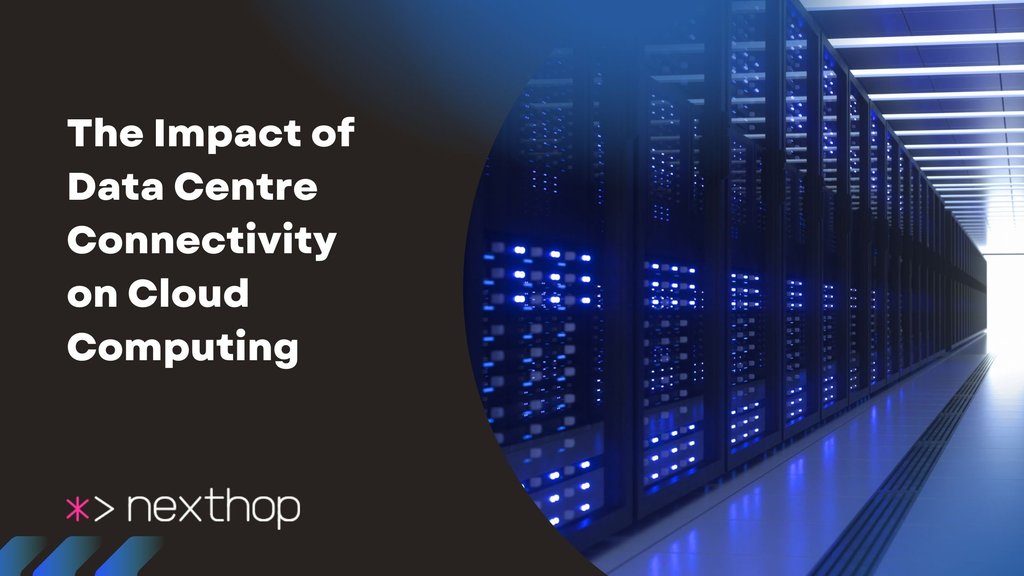Cloud computing has revolutionized how businesses operate and manage technology. By offering on-demand access to vast computing resources like storage, processing power, and software, it's eliminated the need for expensive, on-site infrastructure. At the heart of this transformation is data centre connectivity – it's the backbone that ensures cloud services run smoothly and reliably.
The Foundation of Cloud Performance: Data Cantre Connectivity
Think of data center connectivity as the engine that powers cloud performance. It's how data zips between servers, storage systems, and users. When this connection is strong, everything runs smoothly. But when it's slow or unreliable, it can lead to frustrating delays and poor performance.
Latency and Its Impact:
No one likes waiting. In today's fast-paced digital world, slow websites and sluggish apps can drive customers away. This is where latency comes in – it's the time it takes for data to travel from one point to another. High latency feels like hitting a speed bump on the information highway. It can ruin online shopping experiences, frustrate gamers, and even cause problems in critical areas like finance and healthcare.
Industries where low latency is critical that greatly benefits from high-speed connectivity of cloud services:
Financial Trading: In financial markets, even a millisecond of latency can lead to large financial losses. Firms rely on ultra-low latency networks to complete trades at optimal pricing; hence latency is an important component in electronic trading settings.
Media and Entertainment: Low latency is necessary for streaming services, live sports broadcasts, and online gaming to provide uninterrupted high-quality video delivery. Viewer pleasure and engagement may suffer from delays.
Video Conferencing: For applications such as Microsoft Teams or Zoom to continue operating well, low latency is necessary. Collaboration and communication can be hindered by high latency when audio and visual stutter.
Industrial Automation: For real-time control of machinery and processes in manufacturing and industrial settings, reduced latency is crucial. In automated settings in particular, delays can result in inefficiencies and safety hazards.
Healthcare: Low latency is essential in the healthcare industry for telehealth services and remote monitoring applications. For the sake of patient care and safety, quick data transfer guarantees prompt access to patient information and facilitates real-time decision-making.
Bandwidth and Its Role in Data Transfer:
The maximum rate of data transfer over a network, or bandwidth, is essential for cloud operations. It represents the amount of data that may travel between locations in a given amount of time. The user experience and application performance are directly impacted by having enough bandwidth to handle high data transfer speeds. For businesses that depend on cloud-based services, such video conferencing or big file transfers, insufficient bandwidth can result in bottlenecks, which can cause delayed loading times, reduced service quality, and serious disruptions.
Imagine bandwidth as a pipeline. The wider the pipe, the more data can flow through at once. For cloud services to function properly, you need a robust pipeline. When bandwidth is too narrow, it's like trying to squeeze a fire hose through a garden hose – things slow down and back up.
Network Reliability and Uptime:
As network dependability is critical to uptime, the importance of network reliability for cloud services is necessary for constant delivery of cloud services. Downtime might result in lower consumer trust and lost income. Data centres use failover and redundancy techniques to guarantee high availability. These tactics establish redundancies that offer data paths in case the primary connection fails, guaranteeing that additional connections can take over and continue to function without interruption.
Just like you rely on electricity to keep your home running, cloud services depend on a reliable network connection. It's like having a spare generator ready to kick in when the power goes out.
The Role of Cloud Providers:
Selecting a cloud provider with a strong data centre infrastructure is essential for companies trying to get the most out of the cloud. The cloud infrastructure of the provider, the location of the data centres, and the accessibility of high-speed connections are all important factors to take into account.
Global Reach and Network Coverage: To reduce latency for users globally, choose providers with geographically distributed data centres.
Network Redundancy and Uptime Guarantees: To assure service continuity, choose a supplier with strong backup mechanisms and high uptime guarantees.
Bandwidth: To scale effectively, take into account your workload and select a supplier that offers flexible bandwidth alternatives.
Security Measures: To protect your data, use a supplier that uses robust encryption mechanisms and reliable data transmission techniques.
Examples of Cloud Providers with Strong Connectivity Offerings:
The Future of Data Centre Connectivity
Technology is constantly evolving, and data centre connectivity is no exception. Emerging technologies like 5G and edge computing are poised to revolutionize how we connect and use cloud services. These advancements will bring even faster speeds, lower latency, and new possibilities for businesses and consumers alike.
Emerging Technologies:
Data centre connectivity is constantly evolving, with emerging technologies pushing the boundaries:
Software-Defined Networking (SDN): This technology enhances performance and resource allocation by enabling dynamic traffic management and optimization.
Edge computing: Reduces latency for real-time applications by bringing processing power closer to users.
5G and Beyond: Cloud communication will be revolutionized by next-generation cellular networks, which promise significantly higher data transfer speeds.
The Impact of AI and Machine Learning:
Machine learning and artificial intelligence (AI) are becoming essential for maximizing network performance. By analyzing data traffic patterns, spotting possible bottlenecks, anticipating network failures before they affect operations, and anticipating and proactively implementing fixes, these technologies help ensure uninterrupted operations and reduce downtime.
Security Implications of Data Cantre Connectivity
As our reliance on cloud services increases, so do the associated risks. Cybercriminals continuously seek vulnerabilities to exploit. To protect your data, implement measures such as encryption, firewalls, and regular security updates. Greater connectivity heightens the risk of security breaches, making it essential to establish robust security protocols. Key measures include encryption and multi-factor authentication. Always choose vendors that adhere to industry-standard security practices and compliance guidelines.
Enhancing cloud operations requires network infrastructure optimization, and flawless performance depends on improved data centre connectivity. To properly utilize cloud computing, businesses need to stay up to date on the latest developments and industry best practices as connectivity continues to change. Future of data centre connectivity for cloud computing will be shaped by this continuous development, which will spur efficiency and innovation across industries and make cloud computing more potent, real-time, and secure.





